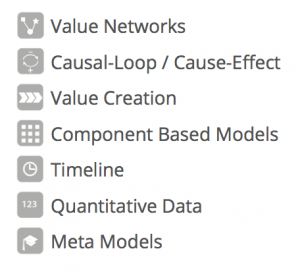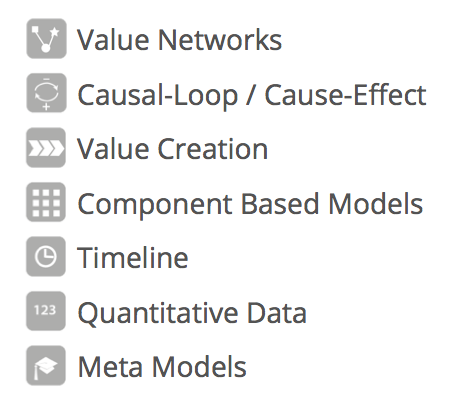While the backend of the Business Model Toolbox is being coded, Frederike Beha presented her research paper “Business Model Innovation: the Role of Different Types of Visualizations” at the ISPIM Conference in Budapest (July 14-17). The paper was co-authored by Anett Göritz and Prof. Dr. Dr. Thomas Schildhauer from the Humboldt Institute of Internet and Society.
Although the ongoing discussions about the definition and design of business models continues to become more prominent, little attention has been given to understanding the different concepts of how business models can be visualized. Such visualizations can help us better understand and design more valuable business models. The research paper provides an analysis of the different forms of visualization that have been previously established and highlights their relationships and differences between one another.
The result of analyzing more than 40 business model visualizations revealed seven different categories.

Each category possess its own unique characteristics and conceptualization of business models. By choosing a specific category, individuals can better understand and design business models from a specific perspective.
- Visualizing a value network gives provides insights on the interrelations of a company with its customers, partners, and stakeholders.
- The cause-effect models illustrate and convey the core logic of a business model and highlight the underlying assumptions.
- The value creation models connect the outer perspective of providing a value with the inner perspective of generating this value.
- To gain both an overview and understanding each individual building block, it is recommended for individuals to apply a component model.
- The timeline helps to understand the evolution of specific forms of business models.
- Although only one quantitative model was identified, this approach is helpful for understanding the characteristics of the value created by a company.
- Meta models can provide inspiration and a broader understanding of the vast scope how a business model can be observed.
The paper introduces the features and characteristics of each visualization category and specifically discusses both their underlying principles and comparative advantages and disadvantages.
>> Read more here: Paper Business Model Visualization


Building an information visualization can aid you in your research process at two different stages.